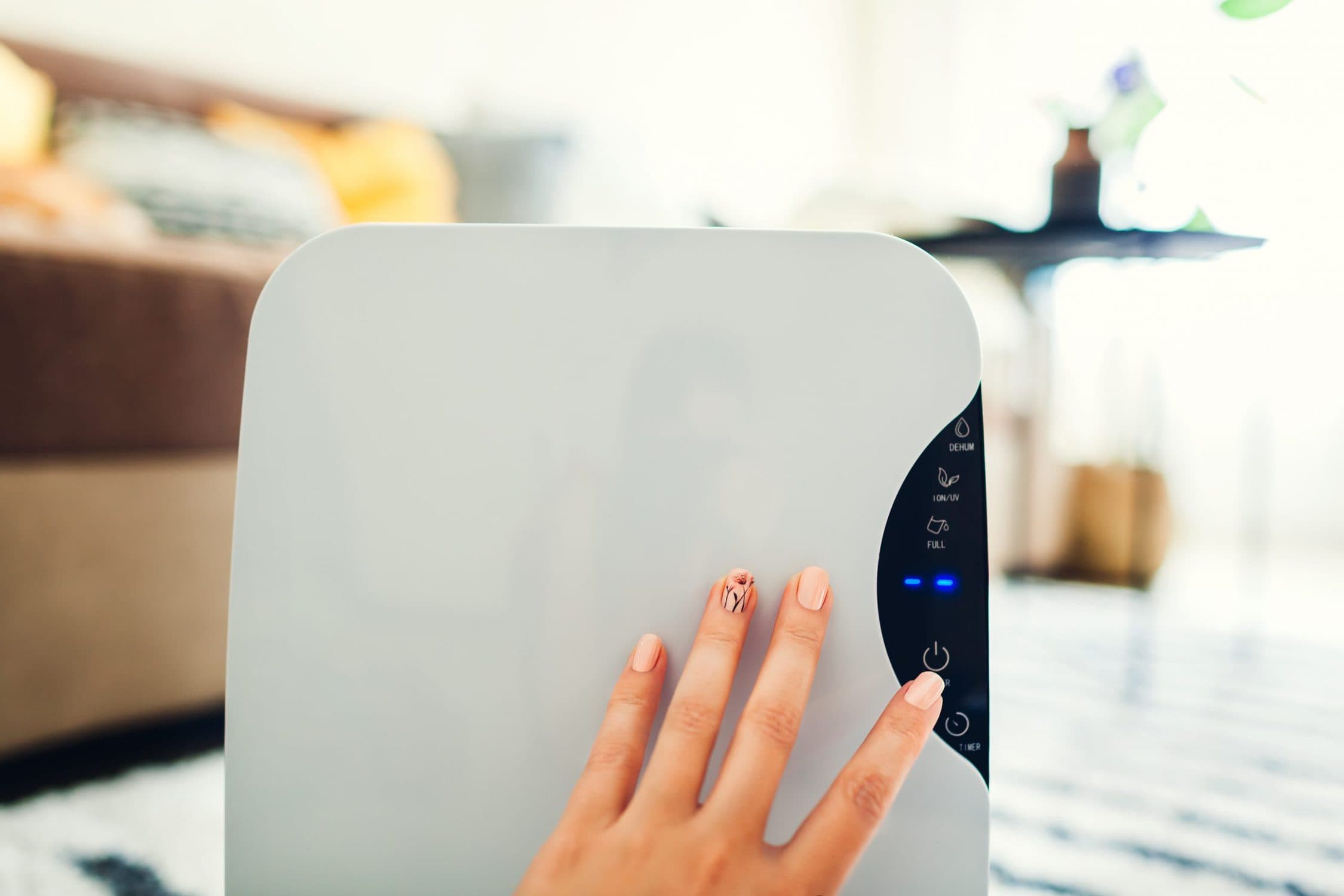
If you’ve ever considered buying a dehumidifier, you may wonder if it’s worth the trouble.
We’re so glad you found this page because you’re about to discover what they are, how they work, what you need to consider before buying and much more.
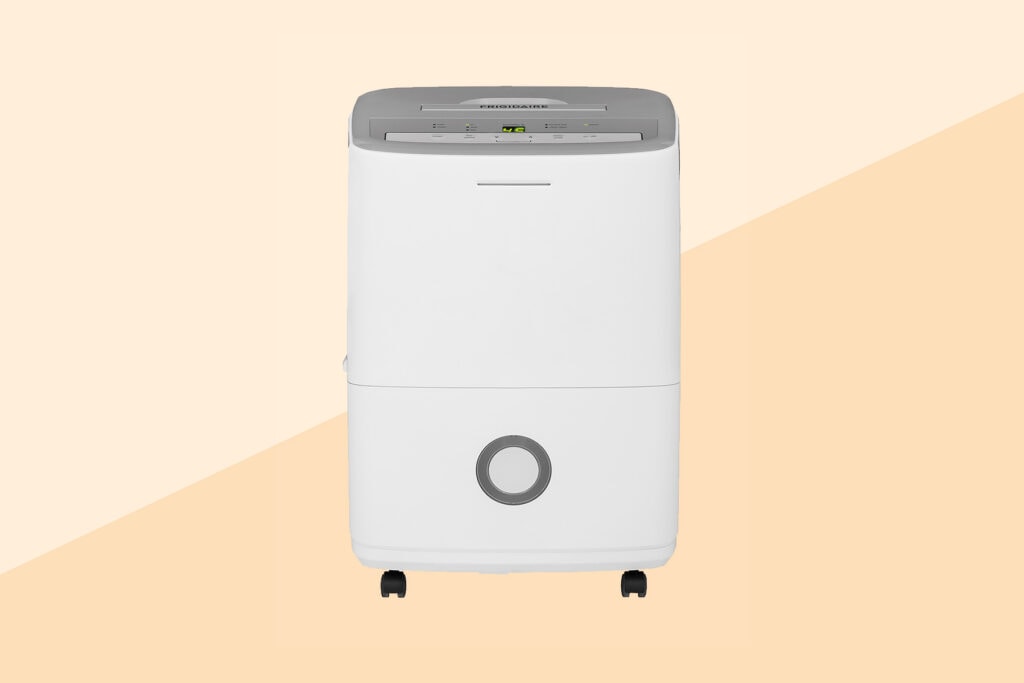
Just looking for something specific? Feel free to use our table of contents to get you to the right information at the click of a button.
Dehumidifier Basics
What is a Dehumidifier?
This product lives up to the definition of its name as it literally removes humidity from the surrounding environment. And there’s much more to learn about these fairly simple machines.
Quite simply, a dehumidifier removes moisture from the air. Though they employ a few different methods, all consist of reducing and maintaining a specific amount of humidity in a space.
Whether that’s your home, basement, or crawl space, there are a number of benefits to dehumidifying your home, including:
● Reducing Mold and Mildew
● Reducing Allergens in the Air
● Creating an Inhospitable Environment for Pests
● Removes Musty Odors
● Decreases Humidity for a More Comfortable Space
● Protects Your Home and Furnishings
● Helps Reduce Energy Usage By Your Heater/AC
● Helps With Breathing Problems Like Asthma and COPD
The question is not, do I need a dehumidifier, rather it becomes, why would you not want to use one?
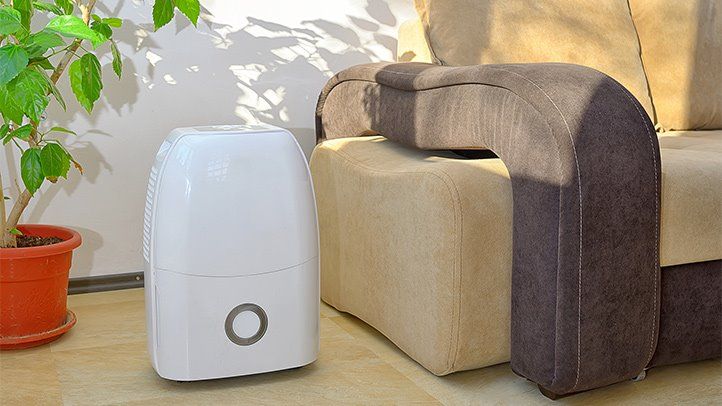
How Does a Dehumidifier Work?
So, how does a dehumidifier accomplish all of these benefits? A dehumidifier works simply by removing moisture by desiccant or refrigeration.
Have you ever noticed moisture on the outside of a cold beverage? The refrigeration process works in a similar way.
1. First, air is drawn in and passed over cooling coils filled with refrigerant
2. The cooled air produces condensation in the form of water
3. That condensation drips and drains down into a receptacle
4. The drier air is then dispersed back into the room
5. The liquid drips into a receptacle that will need to be drained
In the desiccant type, moisture is absorbed in one of two ways:
1. In the mechanical type, air is drawn in
2. The air is then pushed through a desiccant wheel
3. The wheel is a honeycomb of pockets lined with silica gel-like the packets you find in medication or apparel
4. The gel absorbs much of the moisture as the air passes through
5. Around 75% of the air is put back into the room
6. The remaining 25% is used to vent the damp air into an outdoor environment, which leaves the silica dry and ready for the next round
The second way a desiccant dehumidifier works is without electricity. This type is a container filled with silica gel beads which absorb moisture from the air without the need of a fan. Some of these are rechargeable and can be recharged via an electrical outlet to dry out the silica and begin again.
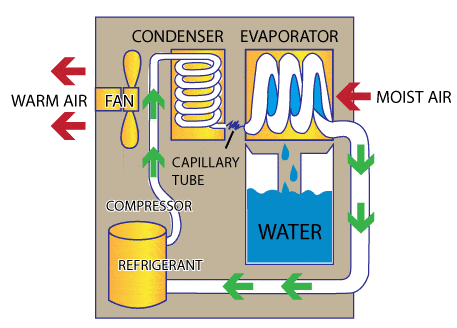
Types of Dehumidifiers
As discussed in the previous section, there are two main types of dehumidifier, desiccant and refrigeration types. However, there are several different types to choose from in these categories depending on your need.
Whole House
A whole house dehumidifier attaches to existing ductwork in your HVAC system to dehumidify air as it is exchanged through the system. It’s kind of a 2-for-1 deal that works alongside your AC. These are typically pretty expensive and require professional installation.
Portable
These stand-alone units plug into an outlet and are perfect for dehumidifying a room or area. You can find these in a variety of sizes and capacities to fit the square footage of the area.
Portable units with a pump require a hose to be run for draining while others contain a tank that must be emptied by hand when full. Often these have an indicator and will shut off and alert you when the tank is full.
Heat Pump
In a heat pump type, the normal process occurs, with air being drawn in and cooled, moisture condensing and being collected, but then goes one step further to slightly warm the air as it puts it back into the room. This can be used year-round to maintain a steady amount of humidity.
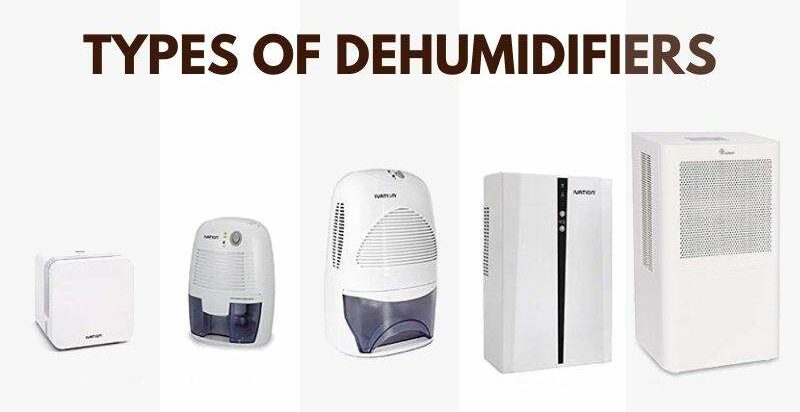
Read Before Buying
If you are convinced you need a dehumidifier but don’t know where to start, you’re in the right place. There are a few things to consider when looking for a unit to fit your needs.
What Size of Dehumidifier Do I Need?
Dehumidifier sizes are measured in pints rather than actual size of the unit. Common sizes are 30, 50, and 70 pints, although you can find units as low as 10-pints or as high as 100.
30-Pint
The 30-pint size is best for areas with moderate dampness of 50-60% and a square footage of 300-500 square ft. Most bedrooms, bathrooms, and other small spaces fit into this category.
50-Pint
A 50-pint is best for wet spaces where you often see damp patches on floors and walls with a humidity level of 60-80% and a square footage of 500-1200 sq ft. This includes many basements, crawl spaces, living rooms, and even a full level of a smaller home.
70-Pint
One of the larger options, a 70-pint is best for very wet spaces, including those with flooding or water damage. It can handle humidity levels of 90-100% in spaces over 1,000 square feet.

If your space is over 2,500 sq ft, you will either need multiple units or a whole house unit you can attach to your HVAC system for sufficient dehumidification.
It is vital to choose a size that fits your space. Choosing a too-small unit risks overworking the unit and it wearing out much quicker, as well as never quite hitting your desired humidity level.
How to Choose a Dehumidifier
Now that you have a good understanding of how to size a dehumidifier, here are some other considerations:
Measure the Space
This will require you to measure both length and width. Once you have these measurements, multiply them together to get total square footage.
Determine Your Moisture Level
Using a hygrometer is the best option to determine the moisture level. If you don’t have one, you can also assess this by observing the area, particularly in the corners and walls. How much mold and mildew do you see? Are the walls damp? This should help you gauge the level of moisture.
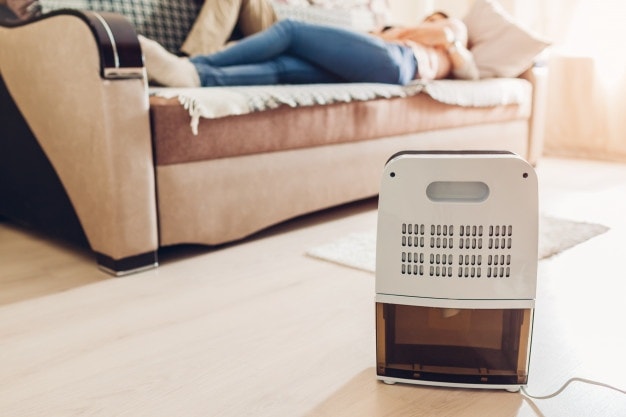
Drainage Method
Do you want a unit that automatically drains? Some units can use gravity for this and don’t require a pump if the hose is at a lower level than the unit. However, if you are installing on a low level, such as a basement or crawl space, you will need a pump to get rid of the moisture. Otherwise, keep in mind that a unit without a hose will have to be emptied regularly.
Target Humidity Level
If storing sensitive equipment, documents, or tools, you may need a stronger unit than your space requires to get the humidity lower than 50%.
Size
Of course size is the final consideration in this formula. So double check the section above before deciding on a purchase.
Popular Dehumidifier Brands
Unsurprisingly, some of the best dehumidifier brands are also some of the best brands in other areas of HVAC.
By choosing from one of these reputable brands, you know you are getting a unit from expert companies who know their trade. These often offer the best warranties as well, because the companies are confident in their products.


● Frigidaire
● Honeywell
● GE
● LG
● Soleus Air
● Perfect Aire
Dehumidifier Maintenance Tips
As with any piece of equipment you own, a dehumidifier will require some regular maintenance and care to keep it operating at its optimal level.
Common Dehumidifier Issues
Here are some common problems that may come up in a dehumidifier.
Dehumidifier Freezes Up
This happens for a bunch of reasons. First, if the ambient temperature is lower than 65 degrees, this can cause freezing. Other causes include incorrect humidity setting, issues with the fan motor, blower wheel, or decreased airflow. Each of these should be checked to determine the problem.
Not Collecting Sufficient Water
If the tank seems empty all of the time, you should start by checking and changing the filters. Poor airflow is often the issue here and can result from a broken fan motor. Another thing to check is that the coils are not frozen. If none of these seem to be the issue, you’ll likely need to call a professional.
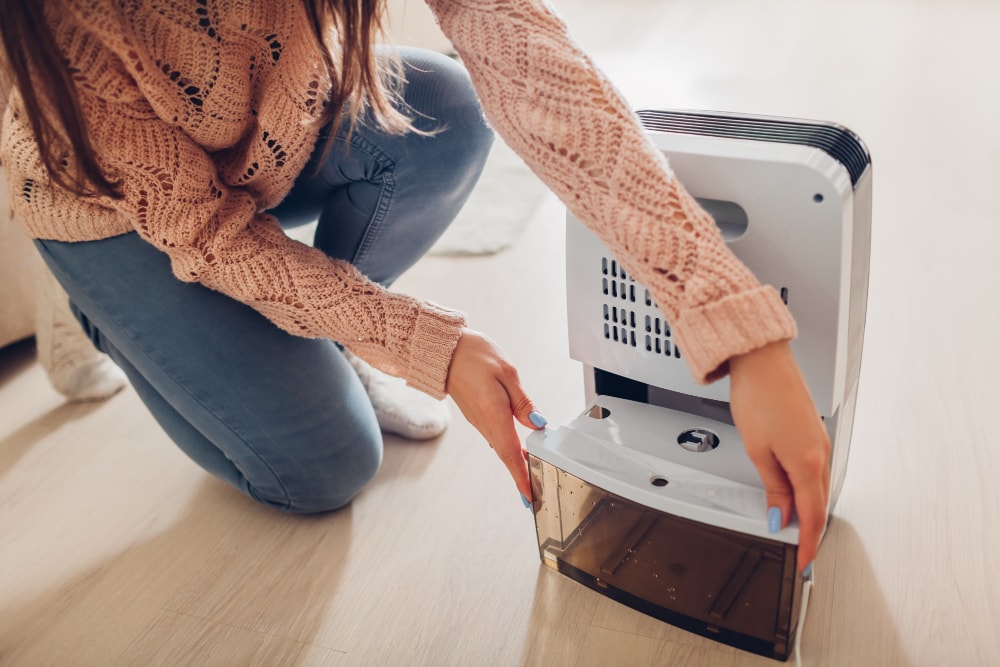
Not Reaching Desired Humidity Levels
First off, check the size of your unit to be sure it is sufficient for your space. This is a common error and will cause the unit to underperform. Secondly, check the humidistat, if included, to be sure it is set at the proper level. Lastly, check the coils for frost and be sure there is the proper amount of refrigerant.
Dehumidifier Troubleshooting
Any time you have an issue with your dehumidifier, it can be frustrating. Whether your unit is leaking, frozen, not blowing air, or not collecting water, here are some simple steps to follow:
1. Unplug the unit and allow to cool
2. Evaluate the ambient temperature- is it too cold?
3. If the temperature is under 65 degrees F, check for frozen coils
4. Inspect the filter for damage and clogs
5. Clean the unit to remove dust, sediment, and put in a new filter
6. Check humidistat settings
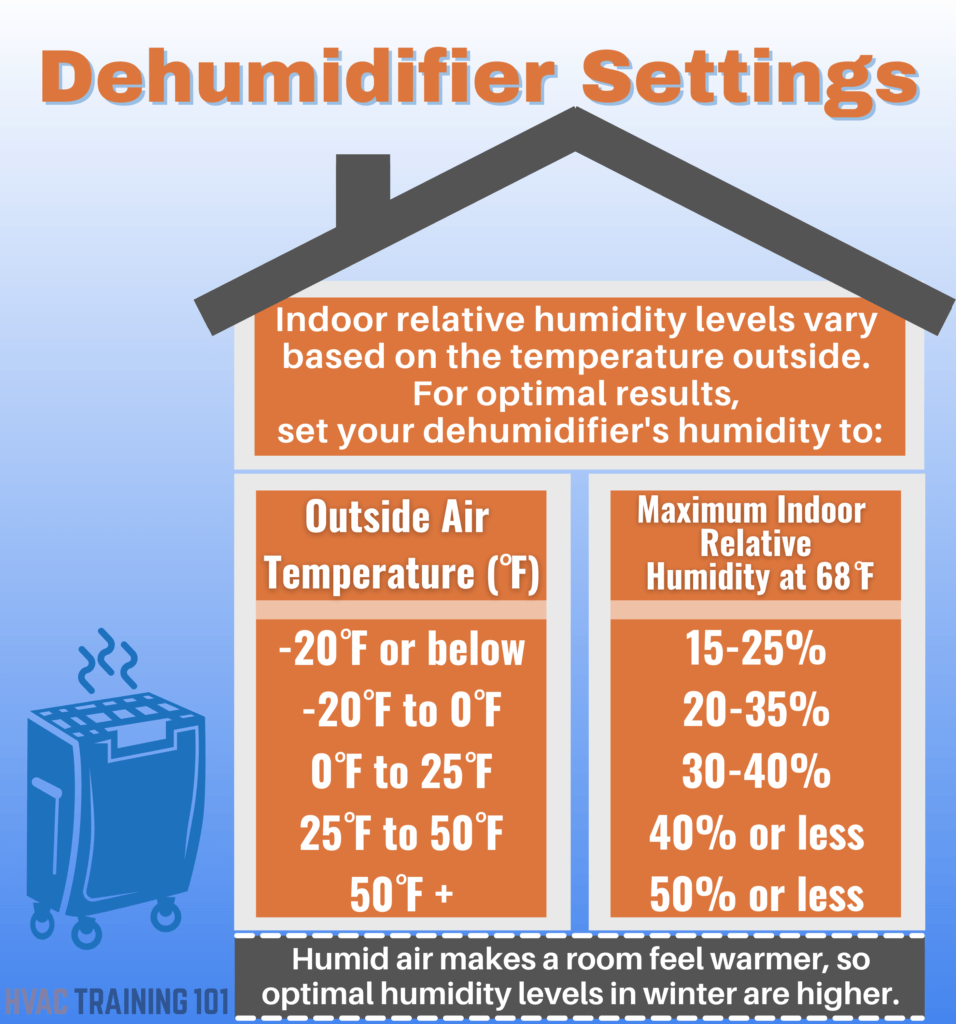
7. Listen for clicking. If the unit clicks when turned on but doesn’t operate, this indicates that the compressor has gone bad
8. Check the fan motor to be sure it is operating, oil if necessary
9. Locate the capacitor inside the compressor and test with a multimeter- replace if necessary
10. Check refrigerant levels and call a professional for a recharge if levels are low
11. If you are a handyman with electrical skills, you can also check the overload device for a short circuit
If none of these tips help get your dehumidifier up and running, your best bet is to call a repairman. This can be costly, but depending on the type of unit, can be more cost-efficient than buying a new one.
How to Install a Dehumidifier
Installing a portable dehumidifier is a simple task. If you are installing a whole-house unit, the task will be more difficult and generally requires a professional.
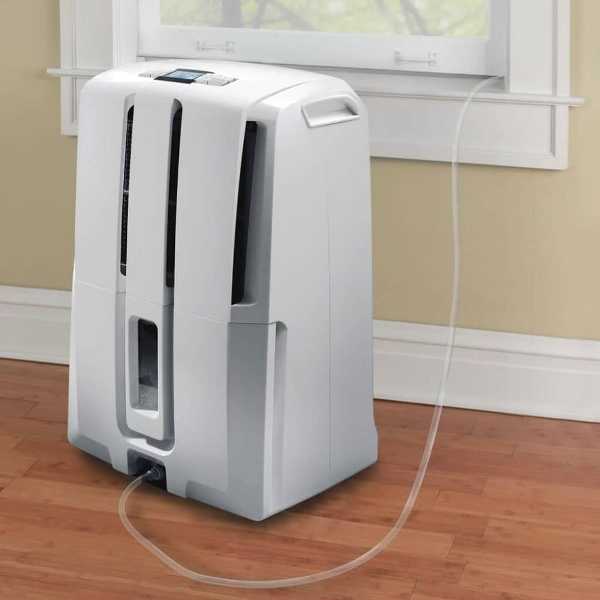
Install a Portable Dehumidifier
Here are the steps to installing a portable dehumidifier:
1. Decide on the best placement- the unit needs plenty of space around it to circulate air and should be located in the area you need the humidity reduced most.
2. Run the hose if self-draining. The hose will need to be placed near a drain or sink. If no pump is being used, the hose needs to be lower than the unit so gravity can draw the water down. If a pump is used, this consideration is unnecessary.
3. Plug the dehumidifier in and turn it on
4. Choose your dehumidifier’s settings. Most units will allow you to set a specified humidity level. Some humidity is beneficial so 30-50% humidity is the recommended range.
5. Once the dehumidifier is running, check back often to ensure moisture is being removed and the tank is not full
6. Temporarily hang or have someone hold the fan motor assembly and connect all wiring. Consult your manual for proper wiring instructions. Match wire colors when connecting. Use a wire nut and electrical tape to secure.
7. Tuck wires inside the electrical box and attach the canopy to the ceiling bracket.
8. Attach fan blades. This may be done with screws or levers that lock blades into place.
9. Add light kit if included and attach the cover.
10. Turn on the breaker and flip the electrical switch.
If you need a visual aid, check out the video below. Just push pause between each step, these guys talk fast.
Install a Whole House Dehumidifier
1. First, decide where your dehumidifier will be mounted. This is often in an attic or near the current HVAC unit.
2. Attach appropriate ducting to both the AC and dehumidifier. Be sure to do this based on the flow of air.
3. The supply duct should be located in a humid area of the house
4. Run or attach into an existing condensate line to drain water
5. Install the filter
6. Add a humidistat- this should be located near the thermostat
7. Plug dehumidifier in
8. Choose the desired humidity level and turn the unit on
Listed above are basic steps for a whole-house dehumidifier installation. Please refer to the user manual for the complete steps specific to your unit. For some visual details, check out the video below.
How to Clean a Dehumidifier
Cleaning a portable dehumidifier isn’t a difficult task. It only requires a few cleaning items and a bit of time. Anyone can do it.
Cleaning a Portable Dehumidifier
● Make sure your unit is unplugged for safety
● Wipe down the outside of the dehumidifier with a damp cloth- avoid getting electrical control panels wet. If they need to be cleaned, use a dry cloth
● Remove the reservoir/bucket and wash with dish soap and water
● Fill reservoir/bucket with ½ vinegar and ½ water and allow to soak while you complete the rest the task
● Clean/change air filters- this depends on the filters your unit uses. Some of these can be rinsed and others are disposable and should be replaced with a new filter
● Clean the bucket filter- this tiny device captures impurities from the air and traps them. This should be emptied and rinsed according to your dehumidifier’s user manual
● Wipe down coils
● Rinse reservoir/bucket well
● Reassemble all parts and plug in the unit.

How Often Should I Clean a Dehumidifier?
Portable dehumidifiers should have a basic cleaning as often as once per week. This involves emptying the tank, checking and washing the filter, and wiping down the unit. Performing a regular cleaning will prevent mold build-up and allow your unit to function optimally and last as long as possible.
The full cleaning listed above should be done once per month, or when the unit has been unused for an extended period of time.
When is it Time to Replace My Dehumidifier?
Dehumidifiers typically last 3-5 years, although some last much longer. However, there are some other indications that a dehumidifier needs to be replaced include:
● It switches on and off regularly (called short-cycling)
● Not reaching the target humidity level- this either means your unit is not performing properly or is the wrong size
● You smell mold every time it runs- this could mean mold is growing inside where it can’t be reached
● Not collecting water even after cleaning and maintenance
● Unit is hot to the touch most of the time- while it may get warm when in operation, if it is hotter than normal, it may indicate an issue
If your dehumidifier isn’t performing, a recharge is an option to consider as well. Refrigerants are required to cool the air to extract moisture, and if the level is low, it may need to recharge your dehumidifier. However, this is usually something that needs to be done by a professional.

Can You Really Find a Quality Dehumidifier That’s Affordable?
Finding an affordable option depends on your budget and expectations. A whole house option will obviously cost more due to its capability. However, there are many budget options available in portable options.
If you want to dehumidify a bathroom, bedroom, or other small area, you can find many units under $100 that will meet or exceed your expectations.
For a larger area up to 1,500 square feet, you can find plenty of options under $200.
If you want to dehumidify a large basement, crawl space, or single level of your home, you will want to look in a higher price range for a 70-pint model.
Matching a unit with the amount of space you intend to dehumidify is essential to achieving your goals, so be sure not to choose a unit that is too small in order to meet your budget. You’ll either need to adjust your budget or decide on a smaller space to use the unit in.
Conclusion
A dehumidifier can be the perfect addition to your home. It will help reduce health issues, keep you more comfortable, and reduce mold and odors.
The benefits are definitely worth it, especially if you live in an area with excessive humidity. Using a dehumidifier will protect you, your home, and your belongings from the dangers of too much moisture.
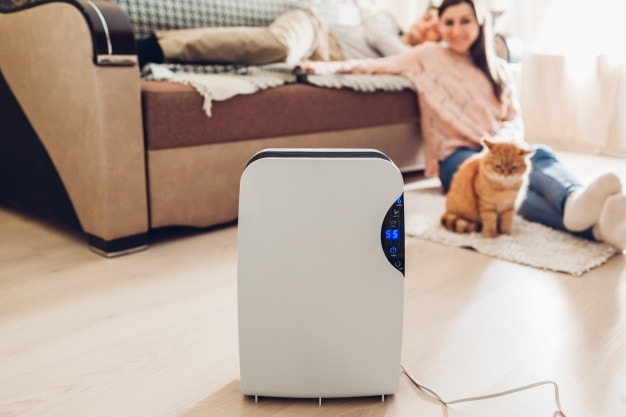
We hope this guide has answered all of your questions. If not, browse around our other site for other dehumidifier articles.
